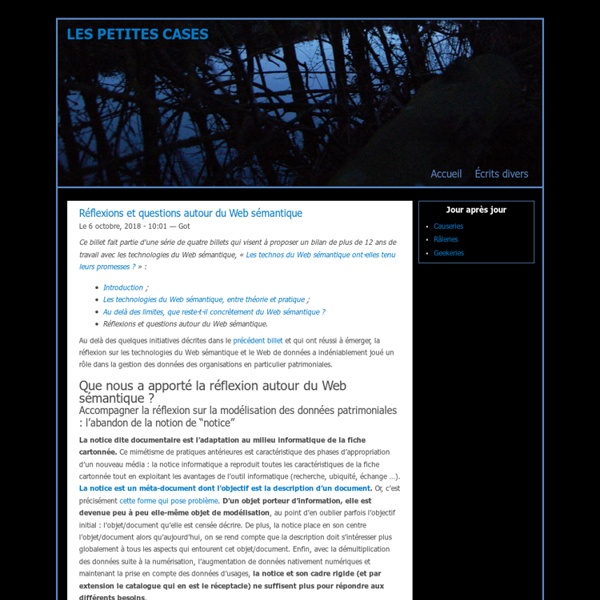



http://www.lespetitescases.net/
Related: DonnéesBibliothèque universitaire de médecine The content and the structure of this Web site is licensed under the Creative Commons License (CC BY NC ND Lebrand C.- BiUM library-2016) unless otherwise noted. In order to build on previous findings, improve transparency and increase results reproducibility, it is important for researchers to be able to re-use research data. For all these reasons, the notion of publication has been evolving over the last ten years and today includes not only the results, but also the essential research data needed to validate the results. Service & Tool Through the process of data life cycle management, the BiUM publication management service is providing information, advice and help to researchers for publishing and sharing their data. We can provide you with guidance on how to prepare a Data Management Plan and how share your data through journal publications and selected repositories to increase the visibility of your work.
Pipes - Module Reference The modules in the Pipes Editor have been grouped into categories based on their functionality. To learn more about the modules, and to see them used in example Pipes, click on the categories below: Sources Most Pipes begin with a data source. » A Librarian’s Guide to OpenRefine ACRL TechConnect Blog Academic librarians working in technical roles may rarely see stacks of books, but they doubtless see messy digital data on a daily basis. OpenRefine is an extremely useful tool for dealing with this data without sophisticated scripting skills and with a very low learning curve. Once you learn a few tricks with it, you may never need to force a student worker to copy and paste items onto Excel spreadsheets.
Working with Data using OpenRefine Over the last couple of years, the British Library have been running a set of internal courses on digital skills for librarians. As part of this programme I’ve delivered a course called “Working with Data”, and thought it would be good to share the course structure and materials in case they were helpful to others. The course was designed to run in a 6 hour day, including two 15 minute coffee breaks and a one hour lunch break.